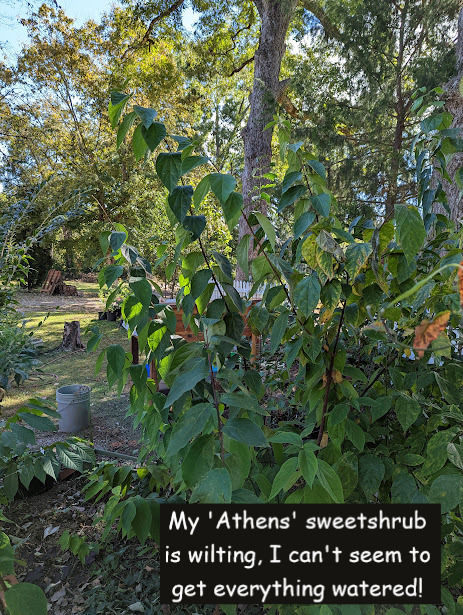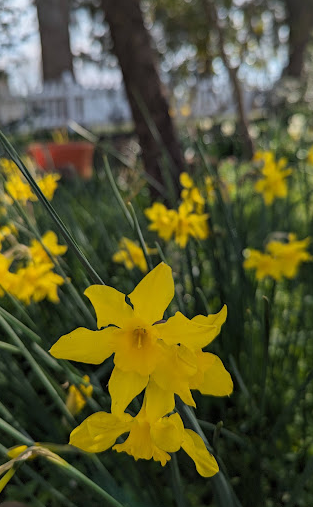When Will it Rain?
- Clifford Brock
- Oct 11, 2022
- 3 min read
We've not had rain in weeks, perhaps even a month... And even though I've not recently planted anything, some of my established shrubs, such as salvias and sweet shrubs, are showing signs of distress... the perpetual wilt stage! I'm trying to water what I can, but I don't want to run our well dry. And despite all the watering, I miss things, and my soil is entering the "powdery" phase.

If things don't change, I'm worried I'll have casualties.
In periods of drought like this, it is critical to set priorities! Annuals, like zinnia, periwinkle, and petunias, are naturally on their way out, so I feel it is necessary to focus on more permanent fixtures. Losing a large established shrub would be way more devastating than say, a petunia.
My gut reaction is to cry "woe is me!", and to hold my fist up to mother nature and throw a tantrum! But just as the sun will rise again, so too will it rain... someday.
We are at the mercy of this awesome yet cruel planet. And as gardeners, we must come to terms with our lack of control. Despite all our efforts, sometimes our plants will die. Sooner or later we must accept the ephemeral, ever-changing nature of nature. Yet there are certain actions we can take when watering that will help us diminish our losses.
It is key to understand that the severity of droughts is not only determined by lack of rain, it is very much influenced by timing. For example, a September-October drought is far less destructive than spring or summer droughts. This is because most of our temperate plants are already shutting down, or beginning to enter dormancy. And because our night-time temperatures have been cool and the intensity of the sun is decreasing, plants are not as stressed.
Yet not all plants go dormant in the fall/winter. Knowing which plants will suffer most will help us prioritize watering. Many of our winter-growing bulbs like Lycoris and schoolhouse lilies, as well as broadleaf evergreen shrubs like gardenia, camellia, and evergreen azaleas are still very much "active" and should take precedence over deciduous plants or plants that are going to seed like echinacea or deciduous native azaleas.
Additionally, any plants you've recently planted, say in the last 5 months or so, should be first on the watering list. And I should explain that all watering isn't equal. It is better to water slowly and deeply, rather than more frequently. I often see less experienced "spraying" their plants rather than watering them.
I like to let the hose sit and trickle on a plant for maybe around 30min. I know this is painstakingly slow and tedious, but it is something you can do in the background. This kind of watering allows you to multitask with other activities like weeding, just don't forget to routinely move your hose around to the next plant on your list.
j
Getting the water deep into the root zones is so important! New plants, including trees and shrubs, are especially vulnerable to drought because they've not had time to establish adequate root systems. Almost all of my casualties have been either new plants or plants in containers. Container plants must be watered thoroughly... water until you see a continuous stream of water coming from the bottom of the container.
It should also be noted that just because a plant is wilted, doesn't mean it is on its deathbed. Many plants, like wild gingers and hydrangeas, wilt routinely even in periods of normal rainfall. This kind of wilting is a defensive mechanism designed by evolution to reduce transpiration in times of heat, wind, or other stressors. Usually, the plant perks up in the evening and wilts only during hot afternoons. Understanding which plants implement this adaptation will also help you prioritize watering.
If you take into account these considerations and make a list of priority plants, I assure you you will lessen the impact of prolonged drought. Because if you are like me, you don't have unlimited supplies of water nor do you have endless time to water everything. Understanding which plants are truly vulnerable to drought will help you save the most important specimens in your garden.




Comments